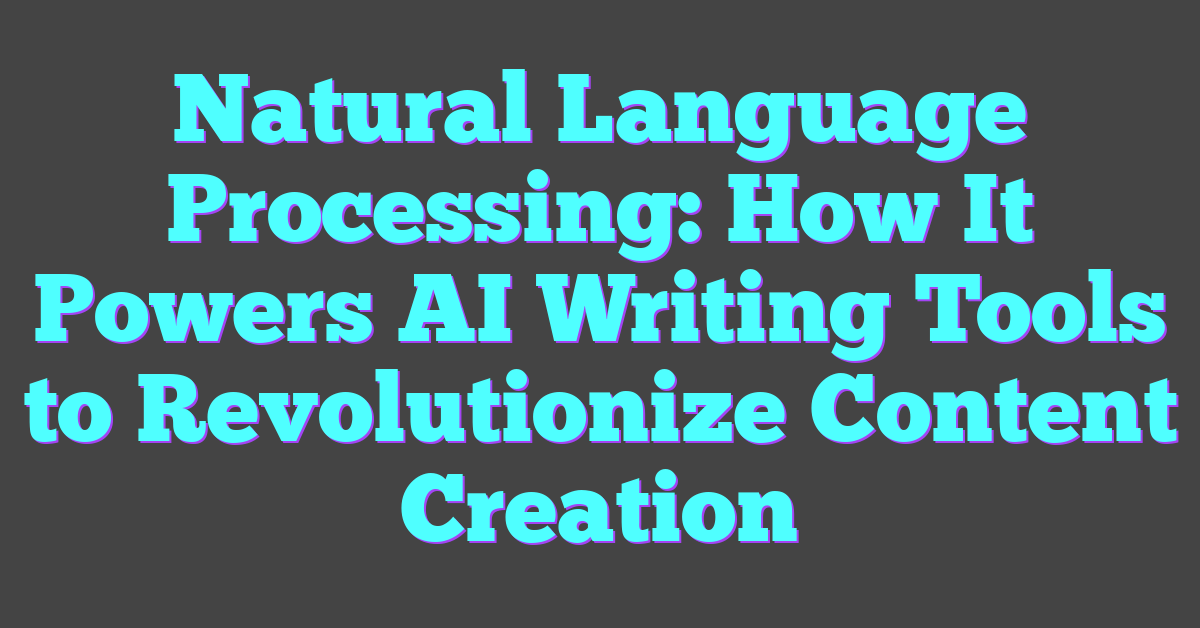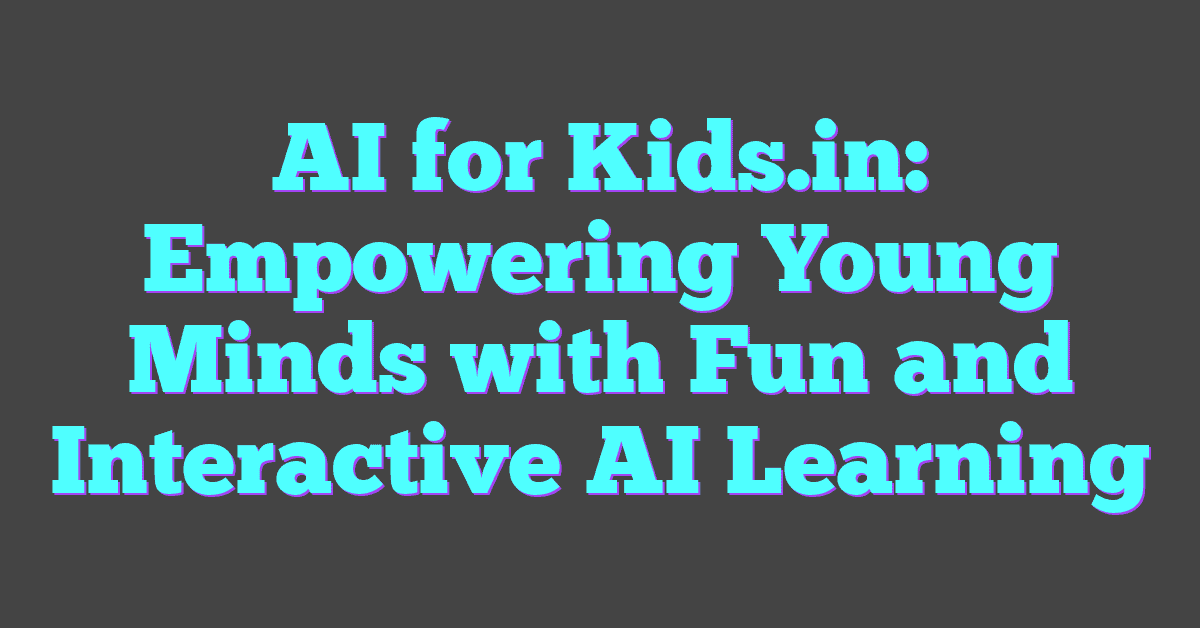Key Takeaways
- NLP is the foundational technology behind AI writing tools, enabling them to understand and generate human-like text with coherence and context.
- Advanced NLP models like transformers enhance AI writing tools by maintaining context, ensuring grammatical accuracy, and adapting to various writing styles.
- AI writing tools boost writing efficiency by automating tasks such as grammar checking, content generation, and providing real-time editing suggestions.
- Improved content quality through NLP includes features like audience personalization, sentiment analysis, and style consistency, ensuring content resonates with target readers.
- The evolution of NLP from rule-based systems to deep learning has significantly expanded the capabilities and accuracy of AI-powered writing tools.
- Future advancements in NLP aim to overcome language ambiguities and expand multilingual support, further enhancing the versatility and effectiveness of AI writing solutions.
In today’s digital age, AI writing tools have become indispensable for creators and professionals alike. At the heart of these tools lies Natural Language Processing (NLP), a technology that bridges the gap between human language and machine understanding. By harnessing the power of NLP, AI can generate coherent, contextually relevant text that feels remarkably human.
NLP doesn’t just enable basic text generation; it allows AI to grasp nuances, adapt to different writing styles, and even understand complex instructions. This seamless interaction transforms how we communicate, streamline workflows, and enhance creativity. As AI writing tools continue to evolve, understanding the role of Natural Language Processing becomes essential for leveraging their full potential.
Understanding Natural Language Processing
Natural Language Processing (NLP) drives the capabilities of AI writing tools by enabling them to understand and generate human language. It serves as the foundation for creating coherent and contextually accurate content.

Definition and Overview
Natural Language Processing (NLP) combines linguistics and computer science to interpret, analyze, and generate human language. Key components include:
- Syntax Analysis: Examines sentence structure to identify grammatical relationships.
- Semantic Analysis: Understands meaning by interpreting words and phrases in context.
- Pragmatics: Considers the intended effect and situational context of language use.
- Machine Learning Models: Utilize algorithms to learn patterns from data for language prediction and generation.
NLP applications encompass text classification, sentiment analysis, machine translation, and speech recognition, each leveraging these components to perform specific tasks accurately.
History of NLP
NLP originated in the 1950s with the development of the Turing Test, aiming to assess machine intelligence. Early systems relied on rule-based methods, utilizing predefined grammar and vocabulary to process language. The 1980s introduced statistical models, improving accuracy by analyzing large datasets. The 2010s saw a shift to deep learning techniques, such as neural networks, which enhanced understanding and generation capabilities. Today, NLP integrates advanced machine learning models, like transformers, enabling sophisticated AI writing tools that produce high-quality content.
How NLP Powers AI Writing Tools
Natural Language Processing (NLP) drives the functionality of AI writing tools by enabling them to generate and understand human language effectively. This dual capability enhances the quality and relevance of the content produced.
Text Generation
AI writing tools utilize NLP techniques to create coherent and contextually appropriate text. These tools leverage advanced models like transformers, which predict the next word in a sequence based on the input provided. For example:
- Contextual Awareness: Tools analyze the input text to maintain consistency in tone and style.
- Grammar and Syntax: NLP ensures that the generated content adheres to grammatical rules and proper sentence structure.
- Content Personalization: AI adapts the writing style to match specific audience preferences or brand guidelines.
Language Understanding
Understanding language is crucial for AI writing tools to interpret and respond accurately to user inputs. NLP enables these tools to:
- Semantic Analysis: Determine the meaning behind words and phrases to grasp the overall intent of the text.
- Sentiment Detection: Identify the emotional tone of the content, allowing for appropriate adjustments in response.
- Entity Recognition: Spot and categorize key elements such as names, dates, and locations within the text.
By mastering both text generation and language understanding, NLP empowers AI writing tools to produce high-quality, meaningful, and tailored content.
Key Technologies in NLP for Writing Tools
NLP integrates advanced technologies to enhance AI writing tools’ functionality. These technologies enable precise text generation and comprehensive language understanding.
Machine Learning Models
Transformers dominate NLP for writing tools due to their efficiency in handling large datasets. Examples include:
- BERT (Bidirectional Encoder Representations from Transformers): Excels in understanding context in both directions.
- GPT (Generative Pre-trained Transformer): Generates coherent and contextually relevant text.
- T5 (Text-To-Text Transfer Transformer): Converts various NLP tasks into a text-to-text format.
These models utilize deep learning techniques to improve language comprehension and generation capabilities.
Data Processing Techniques
Effective data processing ensures accurate NLP performance. Key techniques involve:
- Tokenization: Splits text into manageable units like words or phrases.
- Lemmatization: Reduces words to their base or dictionary form.
- Stopword Removal: Eliminates common words that do not contribute to meaning.
- Vectorization: Converts text into numerical representations for model processing.
These methods enhance the quality of data fed into machine learning models, facilitating better text analysis and generation.
Benefits of NLP-Powered Writing Tools
NLP-powered writing tools transform the content creation process by offering significant advantages in efficiency and quality. These tools leverage advanced algorithms to support writers in producing high-impact content.
Enhanced Writing Efficiency
AI writing tools streamline the writing workflow by automating repetitive tasks. Features such as real-time grammar checking, spell correction, and auto-completion reduce the time spent on editing. Additionally, these tools offer content suggestions, enabling writers to develop ideas faster. For instance:
- Real-Time Editing: Instantly identifies and corrects errors.
- Content Generation: Provides topic ideas and outlines.
- Research Assistance: Aggregates relevant information from multiple sources.
Improved Content Quality
NLP-enhanced tools elevate the standard of written material by ensuring clarity and coherence. They analyze text for readability, maintain consistent tone, and tailor content to specific audiences. Key improvements include:
- Grammar and Syntax: Ensures error-free writing.
- Style Consistency: Maintains a uniform voice throughout the text.
- Audience Personalization: Adapts content to meet the preferences of different reader groups.
| Feature | Benefit |
|---|---|
| Grammar and Syntax | Produces error-free content |
| Style Consistency | Maintains a uniform writing voice |
| Audience Personalization | Tailors content to specific audiences |
By integrating these benefits, NLP-powered writing tools not only enhance productivity but also ensure that the content resonates effectively with its intended audience.
Challenges and Future Directions
AI writing tools face several challenges as they evolve. Addressing these issues is crucial for advancing Natural Language Processing and enhancing content creation capabilities.
Overcoming Language Ambiguities
Language ambiguities impede accurate text generation and understanding. AI must resolve:
- Polysemy: Words with multiple meanings, such as “bank” (financial institution vs. river edge).
- Contextual Variations: Differing meanings based on surrounding text.
- Idiomatic Expressions: Phrases like “kick the bucket” require contextual interpretation.
Improving algorithms to handle these ambiguities involves:
- Enhanced Contextual Models: Utilizing transformers to capture deeper contextual relationships.
- Large-Scale Datasets: Training on diverse data to recognize varied language patterns.
- Continuous Learning: Implementing systems that adapt to new linguistic trends and usage.
Future Innovations
The future of NLP in AI writing tools includes several promising innovations:
- Multilingual Capabilities: Expanding support for diverse languages to enable global content creation.
- Emotion Recognition: Integrating sentiment analysis to tailor content tone based on user emotions.
- Interactive Learning: Developing tools that learn from user interactions in real-time, enhancing personalization.
- Ethical AI Practices: Ensuring transparency and fairness in AI-generated content to address biases and maintain trust.
- Integration with Other Technologies: Combining NLP with computer vision and speech recognition to create comprehensive AI communication tools.
Advancements in these areas will drive the next generation of AI writing tools, making them more versatile and effective in meeting diverse content needs.
Conclusion
NLP has truly transformed the landscape of AI writing tools making them more intuitive and effective. By bridging the gap between human language and machine understanding these tools offer a seamless writing experience.
As technology continues to advance the capabilities of NLP will unlock even greater potential enhancing creativity and productivity for users everywhere. Embracing these innovations ensures that the future of writing remains both dynamic and accessible.




